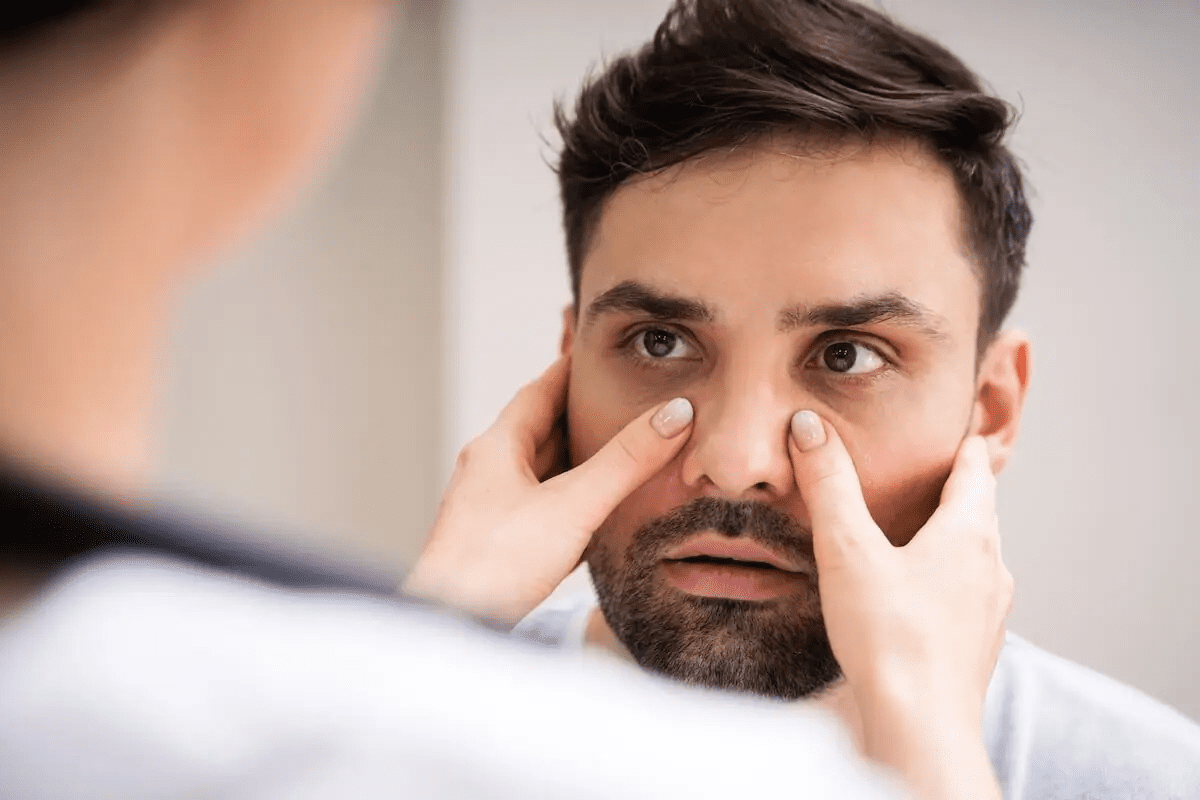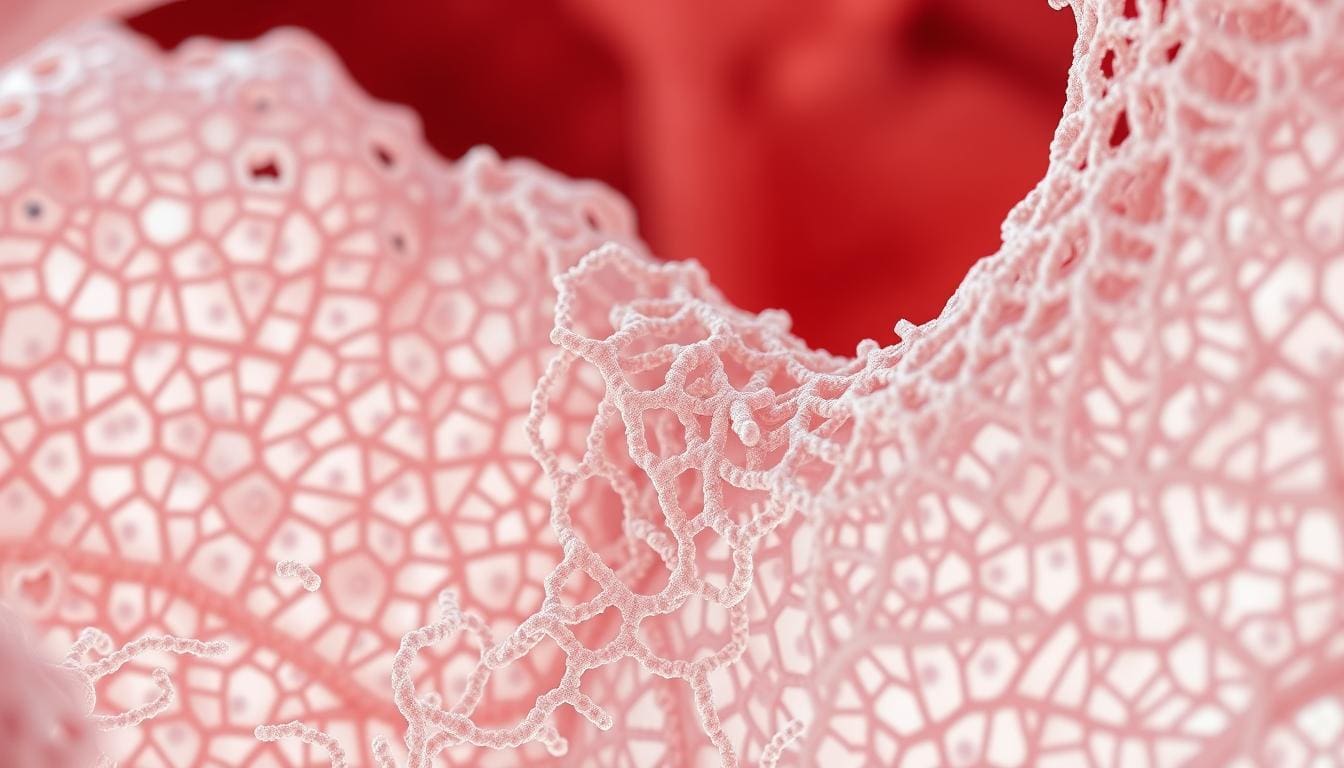Last Updated on October 31, 2025 by Saadet Demir

A complete guide on how to treat chronic sinusitis, focusing on long-term management and symptom relief.
Chronic sinusitis is a complex condition that affects about 9% of the world’s population. It causes long-lasting nasal congestion, facial pain, and drainage. The Centers for Disease Control and Prevention (CDC) say about 30.8 million Americans have chronic sinus problems. This greatly affects their quality of life.
We will look into the causes of this condition. These include bacterial biofilms, structural issues, and environmental factors. Our guide aims to help people manage their condition better. It will give a detailed look at chronic sinusitis treatment options.

Chronic sinusitis is a complex condition that affects millions worldwide. It requires a deep understanding for effective management. This condition can last for months, with symptoms improving and then worsening.
It’s not just a simple infection. It involves various factors, including systemic, local host, and environmental ones.
Chronic sinusitis is defined as inflammation of the sinuses lasting more than 12 weeks. It affects a significant portion of the global population. Studies show it impacts about 12% of adults in the United States.
This results in substantial healthcare costs and a big impact on quality of life.
Acute sinusitis has a sudden onset of symptoms that resolve within a few weeks. Chronic sinusitis, on the other hand, persists over time. It often has periods of remission and exacerbation.
Understanding this difference is key for proper diagnosis and treatment planning.
Chronic sinusitis is not a single entity. It includes various phenotypes, such as those with and without nasal polyps. Nasal polyps often indicate a more severe form of the disease.
Other classifications include allergic fungal sinusitis and chronic sinusitis associated with specific anatomical abnormalities.

Chronic sinusitis comes from a mix of bacterial, structural, and immunological factors. Knowing these causes is key to finding good treatments.
Bacterial biofilms are a big part of chronic sinusitis. These groups of bacteria stick to the sinus walls, fighting off antibiotics and the immune system. Research shows 42-75% of patients with sinus surgery have these biofilms.
These biofilms make infections last longer. They create a safe spot for bacteria to grow, causing ongoing inflammation and symptoms.
Staphylococcus aureus and anaerobic bacteria are often found in chronic sinusitis. Staphylococcus aureus can form biofilms and make toxins that worsen inflammation.
Anaerobic bacteria are a problem, too, when there’s damage to the mucosa or nasal polyps. Their presence makes infections harder to treat.
Structural issues in the nose can lead to chronic sinusitis. Nasal polyps block drainage, causing ongoing inflammation.
A deviated septum also blocks drainage, making infections more likely. Surgery to fix these problems can help symptoms.
Allergic rhinitis and immune issues are also key in chronic sinusitis. Allergies cause inflammation in the nose, which can spread to the sinuses, making symptoms worse.
People with weak immune systems are more likely to get chronic sinus infections. Treating allergies and immune problems is important for treatment.
It’s important to know the signs of chronic sinusitis to manage it well. This condition has different symptoms, making it hard to diagnose and treat.
Chronic sinusitis lasts more than 12 weeks and has many symptoms. These include nasal congestion, facial pain, and postnasal drip. “These symptoms really affect a person’s life,” studies say.
Other signs are thick nasal discharge, a reduced sense of smell, and coughing.
These symptoms can change in how often and how bad they are. Some people have them all the time, while others have them off and on.
Chronic sinusitis is not just one thing. It’s a range of conditions with different causes. The symptoms can vary a lot depending on the type.
For example, some people with a certain type might have more allergy symptoms. Others might have different symptoms.
Knowing these differences helps us treat each person better. We need to understand each type to give the right care.
Chronic sinusitis symptoms can really affect a person’s life. They can make it hard to focus, sleep, and work. “It’s not just physical; it affects emotions and social life too,” groups say.
Managing chronic sinusitis means looking at the whole picture. We need to treat the symptoms and help the person feel better overall. This way, we can improve their life more.
Diagnosing chronic sinusitis involves several steps. These include clinical checks and advanced tests. Finding the right diagnosis is key to treating it well. It helps doctors understand the cause and plan the best treatment.
A detailed physical check is vital for diagnosing chronic sinusitis. Doctors use anterior rhinoscopy to look into the nasal cavity. They also use nasal endoscopy to see the sinuses and check for inflammation or polyps.
Imaging tests are important for seeing how bad the sinus disease is. CT scans show the details of the sinuses and any structural problems. MRI helps tell apart soft tissue masses from fluid buildup.
Getting samples to find the cause of chronic sinusitis is key. Doctors use endoscopically guided cultures and take samples from the sinuses. These samples are then grown in labs to find bacteria, fungi, or other germs.
For those with allergies or immune system issues, special tests are used. These include skin prick tests, IgE levels, and other tests to help plan treatment.
Here’s a comparison of the diagnostic approaches:
Diagnostic Approach | Key Features | Applications |
Physical Examination | Nasal endoscopy, anterior rhinoscopy | Initial assessment, visualization of nasal cavity and sinuses |
Imaging Studies | CT scans, MRI | Evaluating extent of disease, structural abnormalities |
Microbiological Sampling | Endoscopically guided cultures, aspiration | Identifying causative pathogens |
Allergy and Immunology Testing | Skin prick testing, IgE levels | Assessing allergic and immunological contributions |
Managing chronic sinusitis needs a plan made just for you. We’ll look at the different treatments, their benefits, and how to use them.
Antibiotics are key in fighting chronic sinusitis, mainly when bacteria are involved. Choosing the right antibiotics should be based on lab results. Treatment usually lasts 2 to 6 weeks, depending on the case and the antibiotic.
Corticosteroids help by reducing swelling. Topical corticosteroids are used long-term to treat the nasal area. Systemic corticosteroids are for sudden, severe cases but can have side effects.
Antihistamines and leukotriene modifiers help with allergies and swelling. Decongestants ease congestion but should be used carefully to avoid worsening symptoms.
Biologics are new treatments for severe sinusitis. They target inflammation and can greatly improve life for those with severe cases.
Knowing the different treatments helps doctors create a plan that fits each patient’s needs. This way, everyone gets the best care for their chronic sinusitis.
Managing chronic sinusitis needs both medical help and self-care. Self-care can greatly ease symptoms and improve life quality.
Nasal irrigation is key for chronic sinusitis self-care. It rinses the nasal passages with a saline solution. This clears out mucus, debris, and allergens.
We suggest using a neti pot or a squeeze bottle with a nasal spray tip. You can make the saline solution at home or buy it over-the-counter.
“Using nasal irrigation regularly can significantly reduce nasal congestion and sinus pressure,” says Dr. [Last Name], an expert in otolaryngology.
“It’s a simple yet effective way to manage chronic sinusitis symptoms.”
Steam inhalation is another helpful self-care method. It moisturizes the nasal passages, thins mucus, and aids drainage. You can take a hot shower, use a steam humidifier, or inhale steam from a bowl of hot water.
Keeping your home’s humidity levels right is also important. Use a humidifier in dry months to keep the air moist.
Drinking plenty of fluids is key for thinning mucus. Drink water, herbal teas, and clear broths. Avoid caffeinated and alcoholic drinks, as they dry out the body.
Eating foods rich in omega-3 fatty acids, like salmon, and using expectorants like guaifenesin can also help.
There are many OTC products for chronic sinusitis symptoms. Saline nasal sprays and drops moisturize the nasal passages. Decongestants can reduce congestion, but use them carefully to avoid rebound congestion.
Always talk to a healthcare provider before trying new medications or supplements. This ensures they’re safe for you.
For those with severe chronic sinusitis, surgery can bring relief. When other treatments don’t work, surgery is a good option to think about.
Functional Endoscopic Sinus Surgery (FESS) is a small procedure. It uses an endoscope to see inside the sinuses and remove blockages. FESS works well for those with nasal polyps or blocked sinus openings. The steps include:
FESS can greatly reduce symptoms like congestion, facial pain, and loss of smell. It helps restore normal sinus function.
Balloon sinuplasty is a less invasive option than FESS. It uses a balloon to open up blocked sinus passages. This is often suggested for those with mild to moderate sinus issues. The benefits are:
Those who might benefit from balloon sinuplasty usually have:
Sometimes, more procedures are needed to fix specific issues. Polypectomy removes nasal polyps that block sinus drainage. Turbinate reduction helps with nasal congestion from big turbinate bones. These can be done alone or with FESS.
After sinus surgery, proper care is key for a good recovery. This includes:
The recovery time varies by procedure. Most people can get back to normal in 1-2 weeks. It’s important to have follow-up appointments with your ENT specialist to check on healing and remove any packing or splints.
Understanding surgical options helps patients with chronic sinusitis make informed choices. This can lead to significant symptom relief.
More people are looking into alternative and complementary therapies for chronic sinusitis. These methods can offer extra help alongside traditional treatments.
Some herbal remedies might help with sinusitis symptoms. For example, Pelargonium sidoides and Sinupret have been studied for their benefits. They might help reduce inflammation and clear mucus.
Herbal Remedy | Potential Benefits |
Pelargonium sidoides | Anti-inflammatory, antimicrobial |
Sinupret | Mucolytic, anti-inflammatory |
Acupuncture is a part of Traditional Chinese Medicine. It involves putting thin needles in certain body points. Some research shows it can help by improving nasal flow and reducing swelling.
Changing your diet can help with chronic sinusitis. Eating foods that fight inflammation, like omega-3 fish, turmeric, and ginger, might help your nose feel better.
The health of your nasal microbiome is key to your immune system and sinuses. Probiotics can help keep this balance healthy. Early studies suggest they might be beneficial for sinusitis.
Exploring these alternative and complementary methods can help those with chronic sinusitis. They might find more relief and a better quality of life.
To keep your sinuses healthy long-term, it’s key to know how to stop chronic sinusitis from coming back. Stopping it from coming back is important for managing chronic sinusitis well. It makes life better and cuts down on the need for more treatments.
One big way to stop chronic sinusitis from coming back is to control your environment and cut down on allergens. Use HEPA filters at home to clean the air. Clean your space often and stay away from smells and pollutants that can bother your sinuses.
If you have allergies, managing them is a must. Start with allergy testing to find out what you’re allergic to. Then, avoid those things or try immunotherapy. You might also need to take antihistamines or corticosteroids to keep symptoms under control.
Changing your lifestyle can also help a lot. Drink plenty of water to thin out mucus. Keep clean to avoid getting sick. And don’t smoke or be around smoke, as it can hurt your sinuses.
After treating chronic sinusitis, you’ll likely need ongoing care to keep it from coming back. This might include nasal saline irrigations and using corticosteroid nasal sprays. Your doctor will tell you what you need.
By using these methods, you can lower the chance of chronic sinusitis coming back. This leads to better sinus health and a better life overall.
Managing chronic sinusitis varies by age and health. We tailor treatments for children and the elderly. This is because chronic sinusitis affects people of all ages and health levels.
Diagnosing chronic sinusitis in kids is tricky. Their symptoms can look like other common illnesses. We must carefully diagnose and treat children, considering their growing bodies and how it affects their life.
When treating kids with chronic sinusitis, we focus on:
Elderly patients face unique challenges with chronic sinusitis. Their treatment must consider their age and health issues. These factors can affect how well they respond to treatment.
A study in the Journal of the American Geriatrics Society shows the importance of age in treating chronic sinusitis in the elderly:
“Older adults with chronic sinusitis often have multiple comorbidities, which can make diagnosis and treatment more challenging.”
Age-Related Factor | Impact on Chronic Sinusitis Management |
Decreased mucociliary clearance | Increased risk of persistent infection |
Comorbidities (e.g., asthma, COPD) | Complex treatment regimens and possible interactions |
Polypharmacy | Increased risk of medication interactions and side effects |
Managing chronic sinusitis with asthma or other conditions requires a detailed plan. We must consider how these conditions interact. This helps us develop effective strategies for treatment.
For example, a patient with chronic sinusitis and asthma might benefit from:
People with weakened immune systems, like those with HIV/AIDS or undergoing chemotherapy, are at higher risk for chronic sinusitis. We must be careful in diagnosing and treating these patients. They are more likely to face complications.
In conclusion, treating chronic sinusitis in different groups needs a detailed approach. By understanding each group’s unique needs, we can create effective treatments. This improves their quality of life.
New research is leading to better ways to manage chronic sinusitis. We’re learning more about this condition, which helps us find new treatments. These new methods aim to tackle the disease’s complex nature.
Research is focusing on fighting bacterial biofilms in chronic sinusitis. Biofilm-targeting therapies aim to break down these bacterial communities. This makes infections easier to treat.
Substances like N-acetylcysteine and EDTA are being tested. They might help antibiotics work better by breaking down biofilms.
New treatments like novel biologics and immunomodulators are exciting. They target specific parts of the immune system. This could lead to better treatments for chronic sinusitis.
For example, some treatments target IL-5 and IL-4/IL-13. These have shown to reduce inflammation and improve symptoms in some patients.
Studying the sinus microbiome opens up new treatment options. Microbiome-based therapies aim to balance the microbial communities in the sinuses. This could help prevent or treat chronic sinusitis.
Researchers are looking into using probiotics and prebiotics. These might help keep the sinus microbiome healthy.
The future of treating chronic sinusitis is in personalized medicine. Treatments will be made just for each patient. This will use genetic and molecular information.
Genetic sequencing and biomarkers are helping us understand chronic sinusitis better. This will lead to more targeted treatments that work better for each patient.
In conclusion, new research and treatments for chronic sinusitis are promising. These advancements will likely improve how we manage this complex condition.
Managing chronic sinusitis well lets people live a good life despite this condition. Knowing the causes, symptoms, and treatments helps them take charge of their health. This improves their life quality.
Handling chronic sinusitis is doable with the right treatment and care. This includes medical help like antibiotics and corticosteroids. Also, self-care steps like nasal irrigation and steam inhalation are key.
Living with chronic sinusitis means a long-term health focus. Adopting a full treatment plan and making lifestyle changes helps. This way, people can lessen symptoms and avoid future problems.
Dealing with chronic sinusitis is a long journey. It needs patience, persistence, and the right support. With the right plan and care, people can live fully, even with this condition.
Chronic sinusitis is a long-term condition. It involves persistent inflammation and infection of the sinuses, lasting more than 12 weeks.
Main causes include bacterial biofilms and structural issues like nasal polyps and a deviated septum. Allergic and immunological factors, as well as environmental factors, also play a role.
Chronic sinusitis is a long-term condition. It lasts more than 12 weeks. Acute sinusitis is a short-term infection, usually resolving in a few weeks.
Common symptoms include nasal congestion, facial pain, headache, thick nasal discharge, and loss of smell.
Diagnosis involves a physical exam, imaging studies like CT scans, microbiological sampling, and allergy testing.
Treatment options include antibiotics, corticosteroids, antihistamines, biologics, nasal irrigation, and surgery like FESS and balloon sinuplasty.
There’s no definitive cure, but effective management and treatment can improve symptoms and quality of life.
Prevention strategies include environmental controls, proactive allergy management, lifestyle modifications, and maintenance therapy.
Alternative approaches include herbal remedies, acupuncture, dietary modifications, and probiotics. Evidence varies, though.
Chronic sinusitis can affect anyone. But, special considerations are needed for children, the elderly, those with asthma, and immunocompromised individuals.
Emerging research includes biofilm-targeting therapies, novel biologics, microbiome-based approaches, and personalized medicine.
Yes, lifestyle modifications like staying hydrated, managing allergies, and avoiding irritants can help manage symptoms.
National Center for Biotechnology Information. (2025). How to Treat Chronic Sinusitis Complete Guide Chronic. Retrieved from https://www.ncbi.nlm.nih.gov/pmc/articles/PMC11835454/
Subscribe to our e-newsletter to stay informed about the latest innovations in the world of health and exclusive offers!
WhatsApp us